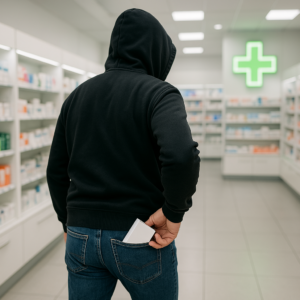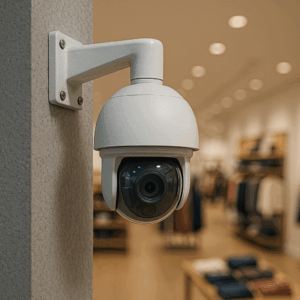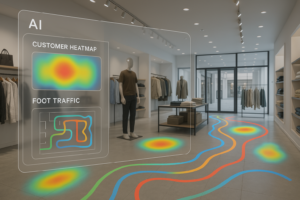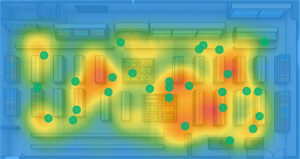Combating shoplifting is a major challenge for retailers, who are constantly seeking to protect their products while offering a flawless customer experience. Two main categories of solutions are generally implemented: video surveillance systems and anti-theft systems . In this article, we will explore these technologies, how they work, and how they can be optimized through innovations in Artificial Intelligence.
Traditional surveillance cameras remain a cornerstone of retail security. They allow for the viewing and recording of suspicious behavior, often serving as an effective deterrent. However, their effectiveness largely depends on human vigilance, which can lead to errors or response delays.
AI-powered video surveillance is revolutionizing this approach. Thanks to behavioral analysis, AI detects suspicious gestures specific to shoplifting in real time. Oxania offers solutions capable of automatically identifying suspicious actions, reducing losses while freeing up time for security teams.
🎥 Video Surveillance Systems
Surveillance cameras are the first line of defense against malicious behavior. Installed at strategic points, they cover sensitive areas like checkout counters, high-value aisles, or exits. Their presence is a deterrent, and the recordings can serve as evidence. However, they require constant human monitoring for maximum effectiveness, which can represent a high cost for retailers.
This is where AI-powered video surveillance comes in. Rather than relying solely on the human eye, intelligent systems automatically identify behavioral anomalies. For example, gestures like concealing items under clothing or repetitive movements around a shelf can be detected and reported in real time. Oxania offers AI technologies that integrate these features.
By combining traditional recordings with intelligent analysis, retailers improve their responsiveness and efficiency, while respecting customer privacy through precise configuration of the behavioral analysis systems.
🔒 Anti-Theft Systems
Traditional anti-theft systems , complementary to video surveillance, allow for a physical response to theft attempts. Anti-theft tags , whether adhesive or hard, are affixed to sensitive products. When a person attempts to leave the store without deactivating the tag, an alarm is automatically triggered by the security gates installed at the exit. This simple but effective system is now widely used in all sectors, from apparel to home improvement.
Among security gate technologies, there are three main categories: radio-frequency (RF) gates , electromagnetic (EM) gates , and acousto-magnetic (AM) gates . Each type has its advantages, depending on the type of products being protected and the store's layout. AM systems, for example, are particularly resistant to interference and well-suited for high-traffic environments.
In addition, specific devices such as anti-theft badges and bottle tags are used to secure highly targeted products. Bottle tags are very popular in the food and beverage sectors to effectively protect bottles without detracting from their visual presentation.
🚀 Toward Enhanced Security Through Innovation
The future of loss prevention lies in integrating smarter technologies capable of combining physical surveillance with automated behavioral analysis. Retailers that adopt a proactive approach and invest in modern solutions like those offered by Oxania experience a reduction in shoplifting.
Thanks to the intelligent analysis of suspicious gestures associated with shoplifting , security teams can focus on genuinely problematic situations rather than staring at screens for hours. This improves operational efficiency and reduces workplace stress, while strengthening asset protection.
Adopting solutions that combine intelligent video surveillance and effective anti-theft systems thus becomes an essential strategy for any business wishing to combine security, a seamless customer experience, and increased profitability. The path to safer, more welcoming stores is through smart innovation.





